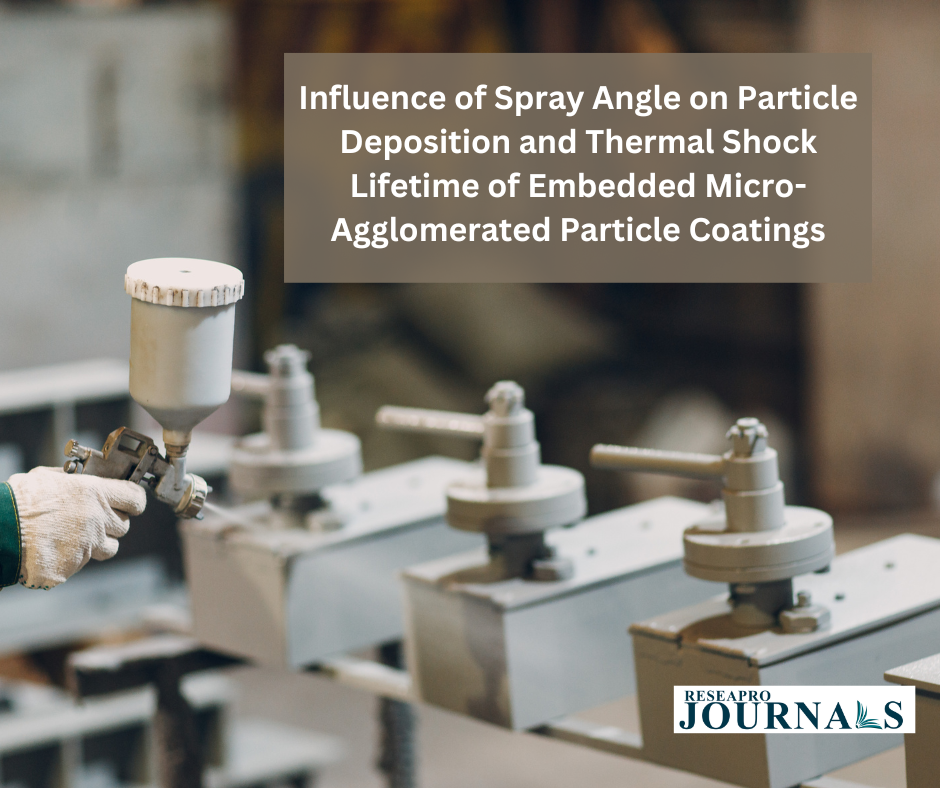

The development of gas turbine technology demands increasingly complex geometries in components, posing challenges for maintaining optimal spray angle during thermal barrier coating (TBC) deposition. This study investigates the influence of spray angle on particle deposition and thermal shock lifetime of embedded micro-agglomerated particle (EMAP) coatings prepared using atmospheric plasma spraying (APS). EMAP coatings were sprayed at four different angles (90°, 70°, 50°, and 30°) to systematically analyze the impact on coating properties.
- Particle deposition efficiency: Decreasing spray angle led to a gradual decrease in particle deposition efficiency. This is attributed to reduced particle momentum and increased bouncing/rebound at lower angles, resulting in thinner and less cohesive coatings.
- Porosity: Porosity exhibited a non-monotonic trend with decreasing spray angle. Initially, it decreased (90° to 50°) due to denser packing, but then significantly increased at 30° due to factors like splashing and incomplete melting.
- Embedded second-phase particles: The amount of embedded second-phase particles also decreased with decreasing spray angle. This suggests less effective incorporation of reinforcement phases, potentially affecting mechanical properties.
- Thermal shock lifetime: Thermal shock lifetime followed a complex U-shaped curve with decreasing spray angle. Highest lifespan (40.6 cycles) was achieved at 90°, followed by a reduction at 50° and a slight improvement at 30°. This behavior is attributed to interplay between denser packing/better adherence at 90°, porosity-induced stress mitigation at 30°, and detrimental pore effects at 50°.
These findings highlight the critical role of spray angle in tailoring EMAP coating properties. Maintaining a perpendicular angle (90°) offers the best balance between particle deposition efficiency, porosity, and thermal shock resistance. Lower angles might compromise deposition efficiency, leading to thinner and potentially weaker coatings. However, the slight improvement in thermal shock lifetime at 30° suggests possibilities for optimization through porosity control. This study provides valuable insights into the influence of spray angle on EMAP coating characteristics and thermal shock resistance. Optimizing spray angle and potentially combining it with other process adjustments holds promise for enhancing coating performance and meeting the demands of advanced gas turbine technologies.
